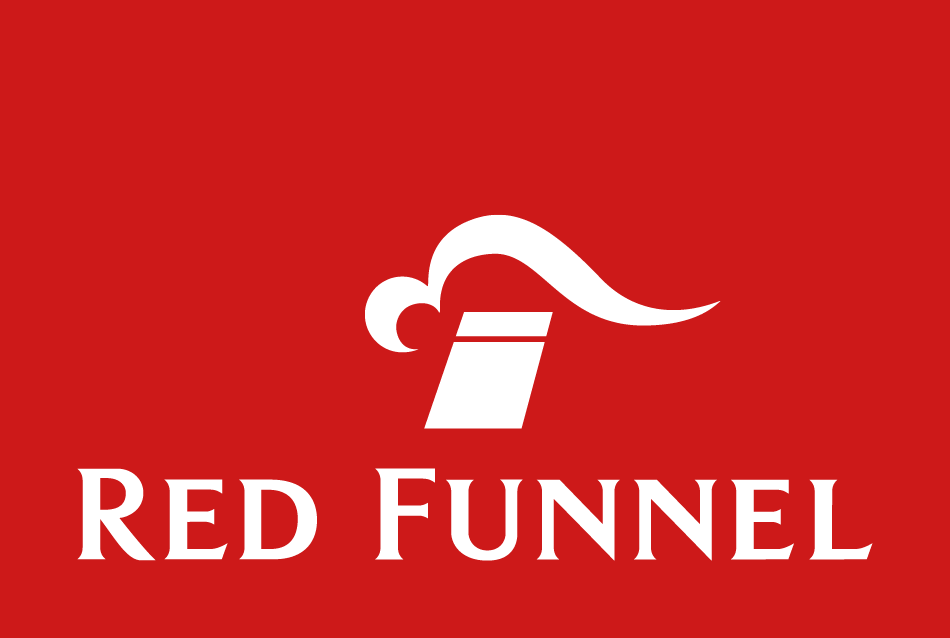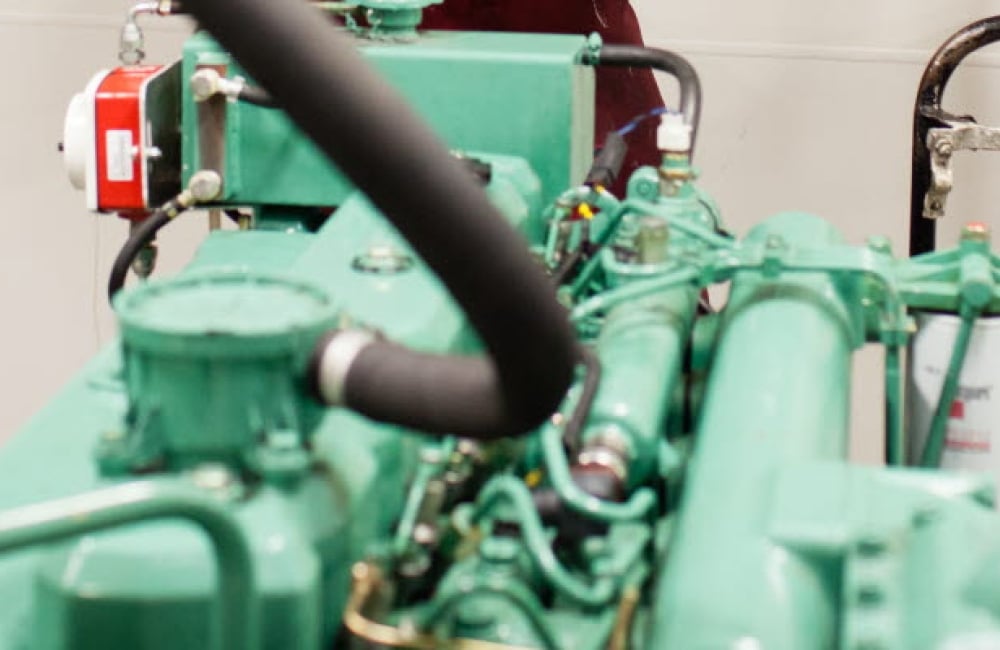Quality, Health & Safety
Quality
ISO 9001:2015
Safety and quality are closely linked and therefore to ensure the best possible management system for managing the fleet, Red Funnel voluntarily chose to obtain the ISO 9001:2015 Quality Management standard.
The ISO 9000 family of standards represents an international consensus on good Quality Management practices. It consists of standards and guidelines relating to Quality Management systems and related supporting standards.
ISO 9001:2015 is the standard that provides a set of standardised requirements for a quality management system, regardless of what the user organisation does, its size, or whether it is in the private or public sector. It is the only standard in the family against which organisations can be certified. Although certification is not a compulsory requirement of the standard, Red Funnel has chosen to obtain certification.
The objectives of the ISO 9000 standards are to:
- Fulfil the customer's quality requirements;
- Comply with applicable regulatory requirements;
- Aim to enhance customer satisfaction;
- Achieve continual improvement of the Company’s performance in pursuit of these objectives.
Red Funnel’s Quality Management System is fully integrated with the Safety Management System and also with the Environmental Management System. This approach will ensure the Company’s stated objectives of achieving the highest standards of safety, environmental and quality performance are achieved.
The current scope of Red Funnel’s Quality Management System is:
- Sea and coastal freight and passenger water transport;
- Management of ships employed in domestic voyages;
- Food & Beverage operations onboard vessels and in terminals.
Statement of Intent for Quality
It is the Policy of the Company to provide services of a consistently high quality to our customers and to identify and explore opportunities and risks that allow the establishment of objectives and processes necessary to deliver results in accordance with the expectations of the interested parties and compliance obligations.
The Company’s objectives are:
- To enhance customer satisfaction by consistently providing a quality of service that meets or exceeds customer expectations.
- To provide such service in a manner which ensures the safety of our customers and staff.
- Capture sufficient new business of increase cross Solent market share to an extent that the Company can deliver a strong financial performance.
- Have a commitment to continual improvement.
These objectives will be measured through Key Performance Indicators and achieved by:
- Continuous appraisal and when areas for change are identified. These are introduced following careful assessment, including a cost benefit analysis, for the improvement of the service to our customers and the enhancement of the management system as a whole.
- Implementing and complying with all requirements of the Integrated Quality and Environmental Management System (IMS), and any other applicable requirements.
In order to ensure that quality requirements are met, there is a defined management responsibility to ensure that all personnel are adequately trained, competent, and fully familiar with the Company’s commitment to providing services of consistent quality to our customers.
Health & Safety
It is the Policy of the Company to conduct its business in such a way as to ensure the health, safety and welfare of employees, contractors, customers and third parties whilst on company premises and vessels and to comply with all statutory, regulatory and other health and safety requirements applicable to the business of the Company.
The company's objectives are:
- To provide for safe practices in all operations and a safe working environment;
- To provide and maintain work systems that are safe and without risks to health;
- To avoid damage to property and injury to persons;
- To continuously strive for improvement in safety awareness and safety management.
These objectives will be achieved by:
- Identification and control of risks;
- Staff training in safe working practices;
- Compliance with applicable codes, guidelines and regulations;
- Audits of compliance.
It cannot be emphasised too strongly that, while responsibility rests with the Company in providing safe and healthy conditions at work, it is incumbent upon employees at all levels to be constantly vigilant and aware of their own and colleagues’ safety at work. Staff should report health or safety concerns through the appropriate channel. Staff must also be aware of relevant codes of practice and be proactive in the deployment of safe working practices in order to achieve the aims of this policy.
ISM Code
International Safety Management Code
Safety is Red Funnel’s first priority and won’t be compromised. Therefore, Red Funnel has complied with the mandatory International Safety Management Code since 1997 to ensure the safety of passengers, crew, vessels and the environment.
The ISM Code provides an international standard for the safe management and operation of ships and for pollution prevention.
Its objectives are:
- To ensure safety at sea;
- The prevention of human injury or loss of life;
- The avoidance of damage to the environment, in particular the marine environment;
- The avoidance of damage to property.
The ISM was introduced by the International Maritime Organisation, part of the United Nations, in the late 1990s, following research which showed that 80% of all accidents at sea are caused by ‘human error’. These accidents all occurred to ships that were otherwise well found and meeting all relevant codes, regulations and certification standards. Therefore, it was found that instead of ‘human error’, these accidents were largely caused by ‘management system failure’.
ISM Objectives
The ISM code provides for a number of company management system objectives.
The safety management objectives for Red Funnel are:
Provide for safe practices in ship operation;Provide a safe working environment;Establish safeguards against all identified risks;Seek to continuously improve safety management skills of personnel ashore and onboard ships;Prepare for emergencies related both to safety and environmental protection.
Continued Compliance
In order to demonstrate continued compliance with the ISM Code, the company and the ships have to be issued with certificates.
The certificate issued to the company is known as the Document of Compliance (DoC). It is issued by the Maritime and Coastguard Agency (MCA), who regulate shipping for the government, for a five-year period.
The certificate issued to the ships is known as the Safety Management Certificate (SMC). These certificates are issued by the MCA for a five-year period.
The ISM certification is maintained with a rigorous schedule of audits and checks:
- The Safety Management System (SMS) is periodically reviewed by ship and shore staff to ensure that the information and procedures contained within them are valid and reflect current practice;
- The SMS is subject to periodic internal audits carried out by Red Funnel managers. Every area of the fleet, ships and office, are audited at least once in a 12-month period;
The MCA will audit the company ashore once a year to ensure that the DoC is up to date and that the management ashore is working correctly. The ships are audited by the MCA once every 2½ years to ensure that the SMS onboard the ship is doing its job correctly.
Environment
Statement of Intent for the Environment
It is the Policy of the Red Funnel Group to protect the Environment and promote good working practices designed to minimise the effects of pollution. The company has integrated its Environmental Policy into its Safety Management and Quality System forming the Integrated Management System (IMS) and will undertake environmental audits or reviews to assess environmental performance within the IMS.
To read more, visit our Environment section.
The Company objectives are to:
- Comply with the requirements of the company Integrated Management System;
- Avoid damage to the environment, in particular, the marine environment;
- Establish safeguards against all identifiable environmental risks;
- Continuously improve environmental management skills of personnel;
- Have a commitment to continual improvement;Have a commitment to prevention of pollution;
- Have a commitment to comply with relevant environmental legislation and any other selected requirements.
The Company made the decision in 2011 to introduce an Integrated Management System that would combine the requirements of ISO 9001, ISO 14001, and the International Safety Management Code (ISM Code). While the ISM Code focuses on safety at sea and safe practices in shipboard operations, ISO 14001 provides the elements for an effective environmental management system, and ISO 9001 ensures that customer requirements for quality are met. There are many common or interfacing requirements between these standards and it is the contention of the Company that the combination of these systems lead to a more efficient way of the company managing safety, environmental issues, and quality management.
The current scope for the Integrated Management System is:
- ‘Sea and coastal freight and water passenger transport.’
- ‘Management of ships employed in domestic voyages including Food and Beverage Activities onboard vessels and in terminals.’
The Integrated Management Policy below is supported with specific statements of intent for safety, quality and environment.
Integrated Management Policy Statement
The Company is committed to meeting the expectations of its interested parties and identifying and exploring opportunities and risks that allow the establishment of processes necessary to deliver results, while meeting its compliance obligations. In seeking to achieve these objectives, the Company remains fully vigilant of its social responsibilities with regard to undertaking activities which reduce environmental damage and minimise any harm caused directly or indirectly to passengers, staff and others.
The Company shall:
- Maintain an Integrated Management System (IMS) to implement and comply with all the requirements of the ISM/ISO 9001 and ISO 14001;
- Ensure compliance with current and future environmental, social responsibility, marine, and health and safety legislation as applicable, relating to our operation and any other initiatives or requirements to which the company may subscribe;
- Commit to liaising with all relevant interested parties, including staff members, to continually improve its quality, environmental, social responsibility, marine, and health and safety performance. Through this, the Company seeks to prevent accidents and cases of work-related ill health, and to maintain safe and healthy working conditions;
- Identify and seek to reduce significant environmental, marine, and health and safety risks, and to prevent any pollution which may arise from our operations;
- Maintain a focus on our customers’ expectations to enable the delivery of a consistently high-quality service;
- Provide safe plant, premises and equipment;
- Minimise, re-use and recycle all materials wherever practicable;
- Provide appropriate quality, environmental, social responsibility, marine, and health and safety information and training for all our employees, building on their competencies and encouraging them to apply good practice both at work and at home;
- Discuss quality, environmental, social responsibility, marine, and health and safety issues regularly at the highest levels of the company while consulting and communicating with our employees on all issues affecting them;
- Liaise with vendors and customers to facilitate the best possible practices for products, service, safety, social responsibility, and the environment;
- Review and revise this policy as necessary and at a minimum of two years.
Sound management principles and practices shall be documented, maintained and applied to realise these commitments, and to achieve demanding and publicly available performance objectives. We shall set these objectives annually, and wherever practicable, they will be quantifiable with progress monitored towards meeting them.


